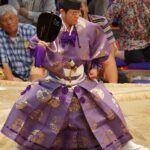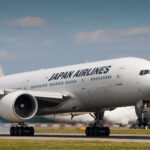Horse Racing is a well-known and thrilling activity in Japan, as it is in many other nations worldwide.
The Japanese races are among the strongest in the game. However, they are pretty different from those we’re used to in the West.
Hence, whether you are a devoted lover of horse racing or have never been to a race, you won’t want to miss the age-old custom of ‘keiba’ when visiting Japan.
Horse racing in Japan: The history
Horse racing is currently the most widely-bet sport in Japan. Bettors may watch the races and place their bets from the convenience of their cellphones, no matter where they are. But how did this cultural craze get started?
Horse racing, in the Western sense, has only been “a thing” in Japan for about 150 years. However, the sport itself has a considerably longer history.
Horse racing had its roots in the 8th century. Then, races between the samurai of the time were held yearly in May at the Kamigamo Shrine in Kyoto. These races were originally a sacred rite for the Imperial Court.
Horse racing has been a tradition in Japan for more than nine centuries. Despite the country undergoing several transformations, changing from an aristocratic to a feudal society.
Horse racing as a tradition today
Although having been Westernized, horse racing is still a tradition in Japan.
Very little is known about the sport’s early years. However, it is thought that European settlers initially introduced Western-style horse racing to Japan in the 19th century.
The United States gave the rest of the globe access to the island of Japan. A fast glance through the history books will show this.
Horse racing was one of the most exciting and durable traditions to cross the ocean during the opening of Japan to the rest of the world in 1854.
But as we noted, this was brought to Japan by the numerous European immigrants who settled in Yokohama. This is a place recognized as the origin of contemporary horse racing in Japan.
Because of this, horse racing in Japan still follows European traditions. It takes place on European-style dirt tracks rather than American ones.
It’s not been without its controversy
Due to the extensive betting it drew, horse racing saw its share of legal issues, just like any other sport.
The Japanese government briefly implemented a policy that conveniently ignored people’s betting activities at the start of the 20th century. However, the policy was reversed in 1908 in favor of considerably stricter rules.
As a result, gambling became prohibited, and breeding for the races declined. The government would take 15 years to enact the much-needed horse racing law that restored public wagering on the races and significantly improved racing conditions.
This resulted in the founding of 11 racing clubs and the Imperial Racing Society, which would govern how races were conducted.
Due to essential changes to the Horseracing Law in 1936, the clubs united with the Imperial Racing Society, setting the foundation for modern horse racing and ushering in big competitions like the Japanese Derby.
What are the biggest horse races in Japan?
Throughout the year, several significant horse races occur across Japan. Let’s take a look at some of them:
Japan Cup
The Grade 1 Japan Cup is a 2,400 m (about 112 miles) invitational turf race held Tokyo Racecourse every November. It offers a purse of ¥476 million (around US $5.6 million), and it used to be the richest turf event in the world. It’s definitely the most well-known race in the nation.
The race has established itself as an international competition with victors from Japan, the UK, Australia, France, Germany, New Zealand, North America, Ireland, and Italy in its comparatively brief existence.
Some of the most remarkable finishes in Japanese racing have come from the Japan Cup. The race is one of the premier annual events, along with the Melbourne Cup, Breeders’ Cup, and Prix de l’Arc de Triomphe.
It was established to allow domestic racehorses to face off against horses of a higher caliber on an international stage and to foster global goodwill within the racing community.
Tenno Sho
Twice a year, a horse race known as the Tenno Sho (literally, “Emperor’s Prize”) is contested in Japan. Once in the spring and once in the fall.
“Tenno” is Japanese for “Emperor of Japan.” Both events are International Grade I competitions. Both Tenno Sho events were Grade I domestic races in Japan before the 2007 competitions.
Arima Kinen
The Arima Kinen is the biggest betting horserace in the world. It’s a Grade I flat race held in Japan and available to thoroughbreds three years of age or older.
It is run at Nakayama Racecourse over 2,500 meters, or around one mile and four-and-a-half furlongs. It happens every year in late December.
It’s one of Japan’s two “All-Star” horse races, the other being the Takarazuka Kinen in late June.
The competition came onto the scene in 1956, and its original name was the Nakayama Grand Prix. The following year, it was renamed to honor the race’s creator, Yoriyasu Arima (1884–1957).
The distance was initially established at 2,600 meters, but in 1966, it was reduced to its current length of 2,500 meters.
Voting by racing enthusiasts determines ten of the field’s 16 runners, all of which must be Japan Racing Association horses. If at least one of the top 10 horses decides not to run, the next eligible horse will fill the space until all ten spots are filled.
The horses from the National Association of Racing (NAR) and those with international bases make up the remaining six, which are chosen depending on prize money received.
The Arima Kinen was only available to horses trained in Japan up until 1999. However, the Japan Racing Association added a new requirement in 2000 that permitted the entry of a horse trained abroad if it had won the Japan Cup that year.
Until 2006, the Arima Kinen was categorized as a Domestic Grade I. In 2007, it was elevated to an International Grade I. As a result, more horses trained abroad can now participate in the race.
Takarazuka Kinen
Late in June, the Hanshin Racetrack in Japan hosts the Takarazuka Kinen, a Grade I flat horse race for thoroughbreds three years old and older.
The race is over 2,200 meters. The Arima Kinen (the Grand Prix), mentioned above, is the other “All-Star” race in Japanese horse racing.
The Takarazuka Kinen was run for the first time over 1,800 meters in 1960. The race was held over 2,000 meters from 1961 to 1965, and since 1966 it has been held at its current distance.
Similar to the Arima Kinen, the majority of the field’s competitors are chosen by the votes of racing enthusiasts, with the remaining competitors chosen based on prize money collected.
Yasuda Kinen
A Japanese International Grade I Thoroughbred horse race, the Yasuda Kinen takes place at Tokyo Racecourse.
It’s a turf race that takes place every June and is open to horses three years old and older. The distance is eight furlongs (one mile).
In 1951, the Yasuda Sho, named for Izaemon Yasuda, the first chairman of the Japan Racing Association, was held for the first time. After Mr. Yasuda’s passing, the race’s name was changed to Yasuda Kinen in 1958.
The race was promoted to Grade 1 classification in 1984 and international Grade 1 status in 1993. The event was elevated to the Asian Mile Challenge’s last stage in 2005. A second US$1 million bonus is awarded to any horse that wins two of the four races in the Asian Mile Challenge, as well as the first-place prize of US$1 million.
Previous winners of the Yasuda Kinen include Taiki Shuttle and Oguri Cap, who were both recognized as Japan’s Horses of the Year in 1998 and 1990.
The race has also been won by horses from other countries, including the Godolphin winner Heart Lake in 1995 and Fairy King Prawn, who made history in 2000 by being the first horse trained in Hong Kong to ever win a Grade I race outside of Hong Kong.
Bullish Luck, another champion from Hong Kong, won the event in 2006 and received bonus money from the Asian Mile Challenge for winning both the Champions Mile in Hong Kong and the Yasuda Kinen.
Takamatsunomiya Kinen
The Takamatsunomiya Kinen is a Grade 1 flat horse race in Japan for thoroughbreds four years old and older.
It is run at Chukyo Racecourse over 1,200 meters or around 6 furlongs in late March.
The Takamatsunomiya Kinen is the only JRA Grade 1 race not contested at one of the four major racetracks, i.e., Tokyo, Nakayama, Kyoto, or Hanshin.
February Stakes
The February Stakes is a Grade 1 flat horse event in Japan for thoroughbreds four years old and older. It is run at Tokyo Racecourse in late February over a distance of 1,600 meters, or around 8 furlongs.
It was accorded a Domestic Grade 3 rating and ran for the first time in 1984 as the February Handicap. Domestic Grade 2 was assigned to it in 1994, in 1997 it received Domestic Grade 1, and its current grade in 2007.
In 1994, February Stakes was added to the name.
It is regarded as a prelude to the dirt races at the World Cup Night meetings in Dubai.
Enjoy one of the many great horse races in Japan
So there you have it: some of the best horse races in Japan and an understanding of what the sport is lke in the country. If you’re looking for something fun and different to do while visiting, this is certainly a good choice.
- Writing & Understanding Haiku Poetry - May 25, 2023
- Shinkansen Bento: A Guide to the Delicious Train Station Box Lunches - May 25, 2023
- What is Takoyaki? - May 25, 2023







